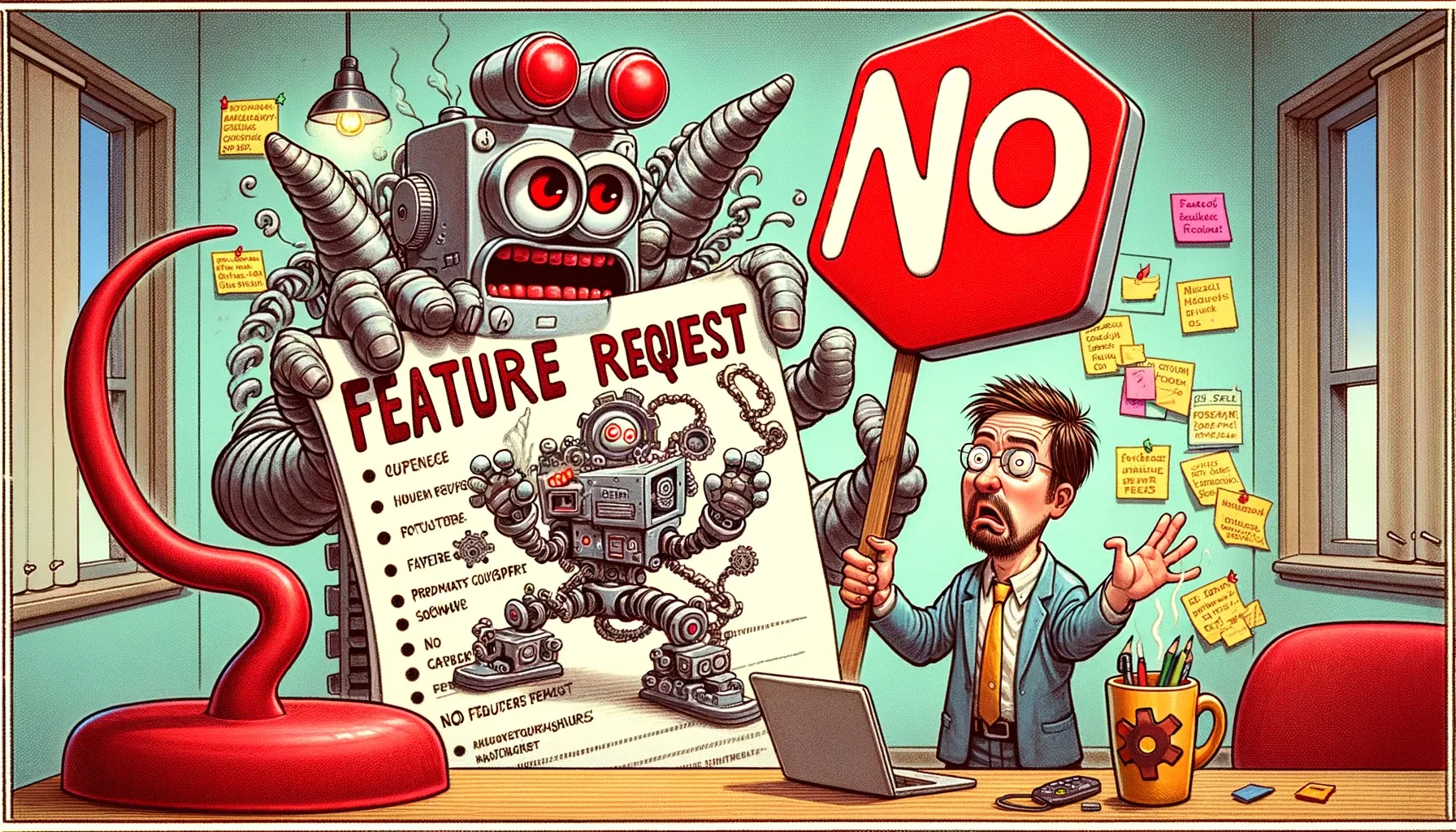ProductFTW #6: How to Effectively Communicate as a Product Manager
So, how did I improve my communication to a commanding-a-room level? Practice. As the saying goes, practice makes perfect, and communication is something that needs to be practiced almost every day. Here are ways you can practice...
Over the last few weeks, we’ve explored what a product manager is and its role and responsibilities. One of the core themes has been communication.
As a product manager, your role fundamentally involves accurately interpreting your customers’ needs and transforming them into clear, actionable tasks for your development team. It’s like an ongoing game of telephone; any lapse in listening, interpreting, or communicating can adversely affect your product. It turns out that communication is something we do all the time, but it isn’t something we often practice to improve.
I remember when I started my PM career, I was terrible at synthesizing my thoughts and putting them on paper, and I wasn’t self-aware enough to know I was terrible. My engineering lead at the time (Hi, Mitchell) suggested we get a coffee and give each other a little evaluation since we were peers and not getting much feedback from management, and we both wanted to keep accelerating in our careers (something I highly recommend to everyone). During this session, he provided examples of when my ineffective communication had impacted the team.
Fast forward a few years later, Mitchell gave me one of the biggest compliments of my life. He told me I could walk into any room, with any audience, and immediately command it. I was in disbelief, but over time, I realized that this was the perception of my peers because I had become an excellent communicator. My job title put me in a position where there was very little room between me and company leadership. It was my job to ensure we got shit done (GSD).

So, how did I improve my communication to a commanding-a-room level? Practice. As the saying goes, practice makes perfect, and communication is something that needs to be practiced almost every day. Here are ways you can practice:
Documentation
Document everything.
Documentation is an art. It is incredibly challenging to document something that will make sense to someone who wasn’t present, or that will be relevant in the future. However, doing this well will ensure you don’t have duplicative conversations or, worse, revisit decision-making. Time is money.
As a product manager, you’re deeply involved in every facet of your product and at the center of all communication channels. You must ensure that every decision, meeting outcome, and significant interaction is documented and effectively communicated to relevant parties. The approach you take to document and share these details is entirely up to you, and it might vary based on your unique PM style (we will discuss PM styles in a future post). The way I approach this is by asking myself, “If I wasn’t present at the meeting, or had little to no context on the topic, would I understand it by reading my documentation?”
Ask Questions
Ask at least three questions, even if you believe you already know the answers.

Now, don’t be that person who sits at the table and asks questions that detract from the topic or try to be the most intelligent person in the room. Instead, ask questions to guide your peers into being more effective communicators or challenge their opinions. We all win together.
This also applies to your customers and stakeholders. As a PM, you will need to listen to your customers or stakeholders and translate those into specific requirements. However, how can you truly know the actual needs of the customers or stakeholders if you don’t ask questions? You are only making assumptions. As the familiar saying about assumptions reminds us, this often leads to misunderstandings.
Be a Parrot
“Do you mind if I repeat that back to you?”
This simple question can be a powerful tool in ensuring effective communication. Parroting, or repeating back what someone has said in your own words, serves multiple purposes. Firstly, it confirms that you have correctly understood the speaker’s intent, which is crucial in avoiding misinterpretations. Secondly, it provides an opportunity for the speaker to clarify if there’s any discrepancy between what they said and what you understood.
But how do you implement this technique without sounding repetitive or like you’re not paying attention? I suggest listening carefully, rephrasing for clarity, and seeking confirmation: “Did I understand that correctly?”
Be Direct
Give direct feedback & answer questions clearly and concisely (then provide additional context if necessary).
Less is more in a professional setting (and perhaps a personal one). I am not suggesting you give less feedback, output, etc. You should give it your all, but be focused and efficient. When giving feedback, don’t sugar-coat it. Be direct.
Have you ever had a manager provide you with feedback that wasn’t clear, and you couldn’t understand how you could improve? This is what I am talking about. It is not a learning experience to figure out your manager’s feedback. It’s a waste of time, and you’ll likely never meet their expectations. You learn if your manager sets out very clearly what they expect, so you can quickly react without confusion and a bunch of trial and error.
Being direct applies to your product work, too. You will be asked a lot of questions, such as “When will the team deliver this feature?”, “What is on the roadmap?”, “Does the team have the capacity?” and many more. As a product manager, you’re deeply involved in the various complexities of your product and team. While your initial reaction may be to share all details, doing so can lead to confusion and even mistrust. People need to see you as a reliable source of information and trust your insights as the voice of the product. If you consistently respond with lengthy explanations, there’s a risk that your coworkers might seek information elsewhere or draw their own conclusions.
Say No
Say no more than you say yes.

It is easy to say “yes.” Saying yes makes everyone feel good. But saying yes to everything means nothing gets done. Every product manager must embrace saying “no.” It’s not about being uncooperative or unfriendly but protecting your team and the product. Regardless of your company’s size, you have limited time and resources. Having unresolved edge cases is OK because you must be hyper-focused on delivering the highest-impact features. Saying “yes” is a strategic decision that must align with the product’s overall vision and goals.
Practice, Practice, Practice.
Mastering the art of communication is not going to happen overnight. It is something you will refine and adapt over your career. Remember, the goal is not just to convey information but to do so in a way that is clear, impactful, and aligns with your team and stakeholders’ needs, and when your team grows or you change roles, you will have to adapt again. Reflect on your interactions, seek feedback, and remember that every great communicator was once a beginner. Your ability to articulate visions, needs, and feedback clearly is your superpower as a product manager.
I would love to hear about your experiences and tips in the comments below. How have you improved your communication skills? Let’s learn from each other and continue to grow.
Here’s to speaking our way to success, one clear, concise, and constructive conversation at a time.
